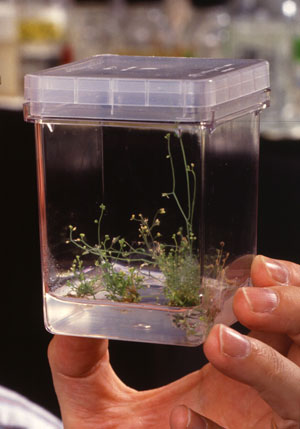Polynomial Applications
Underdominance
Use the equation above to answer the following questions: Rewrite the equation for finding equilibrium allele frequencies. Find the equilibrium frequency for a given allele. Determine how many equilibrium frequencies exist for a given allele. Find the positive equilibrium frequency of a given allele. Find the frequency of an allele as time increases.
***** |
The Biology Project > Biomath > Polynomials > Applications> Underdominance
The Biology Project
Department
of Biochemistry and Molecular Biophysics
The University of Arizona
February 2007
Contact the Development Team
http://www.biology.arizona.edu All contents copyright © 2007. All rights reserved.

